Some of the links below are affiliate links, which means we will earn a commission on the products or services you purchase using the links. There is no additional cost to you and the earnings help keep this website running. Read the Affiliate Disclaimer for more information.
I’ve been struggling with this post for quite a while because not many people read our travel posts. We can’t help but wonder if it’s worth spending the time to write them. So we are going to change things up a bit and try something different. This post will be a more personal encounter of the time we spent in Pagosa Springs, Colorado. Maybe you’ll find it more interesting than our previous travel posts. If you have any feedback on our travel posts we would love to hear from you.
As we reflect on the four nights we spent in Pagosa Springs, a few things stand out that really defined our time in the area.
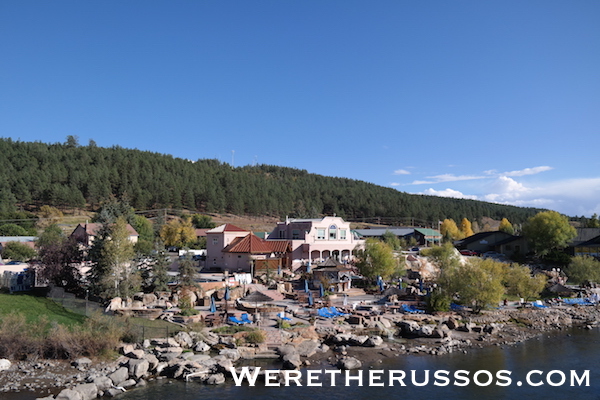
Pagosa Springs, Colorado
A good or bad meal can define the way we explore a town. We rarely eat out now that we are full time RVers. It works out well since we both love to cook and have a limited monthly food budget. On the rare occasion that we do eat out, we want to have an enjoyable experience. Our first night in Pagosa Springs, we ended up at a popular restaurant and brewery recommended to us by locals. The fun night out we were looking forward to turned out to be bad beer, bad food and bad service. Although the meal left us unsatisfied and disappointed, we were rewarded with a double rainbow on the way out. So we made the rest of our meals at home and that lead to some of the most comforting meals we’ve made since the start of our full time RVing journey.
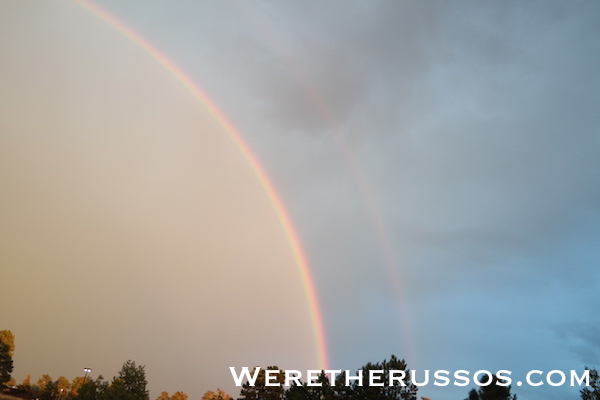
Full hookups are worth the splurge. A one night stay turned into four nights after we stumbled upon a Blanco Rio RV Park about 10 miles south of town center along the river. Up to this point we had stayed in parking lots, a decommission missile site and fairgrounds, but not an RV park. With limited boondocking options, we splurged on a beautiful river front spot with an amazing view, full hook ups and nice bath house.
For three nights we tossed aside our boondocking ways. We enjoyed long showers, turning on lights freely, charging everything we owned and streaming movies over wifi. Life was also a lot quieter without the generator. More importantly, I could use the waffle maker whenever I wanted. After this RV park splurge, we’ve decided to hookup every once in a while.
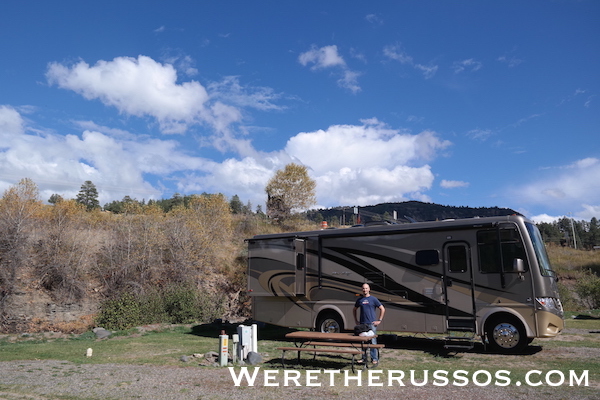
Always be prepared. Our second night at the RV park, we received a flash flood advisory alert on our phones. The river that’s 10 feet behind our campsite was at risk of flooding. We had no idea how bad the situation could get and decided to pack up the RV. The slides came in, loose items were put away, the RV was ready to drive if the river got over the bank. With the warning in effect until midnight, we stayed up to keep an eye on the water level.
Luckily the water never made it over the bank and we woke up to a crisp sunny morning. When we ran into the park owners the next day, they told us that earlier in the season, the river did rise high enough to come over the bank and flood the row we were camped in. They had to move everyone to higher ground. It’s a good thing we kept an eye on the water level all night. This was our first weather “scare” and good practice for other situations along the way – we also now check our weather apps a lot more often!
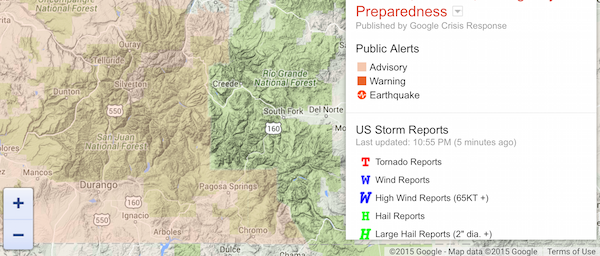
Forest roads are too much fun. The main reason we tow a Jeep Wrangler is so we can go off roading. There are some great trails around Pagosa Springs, Colorado. Our favorite was East Fork Road which goes deep into the San Juan National Forest. The road is known for being treacherous past the Silver Falls sign and a 4×4 high clearance vehicle is recommended. We found several dispersed camping spots on the drive and wished we had a tent to camp in overnight.
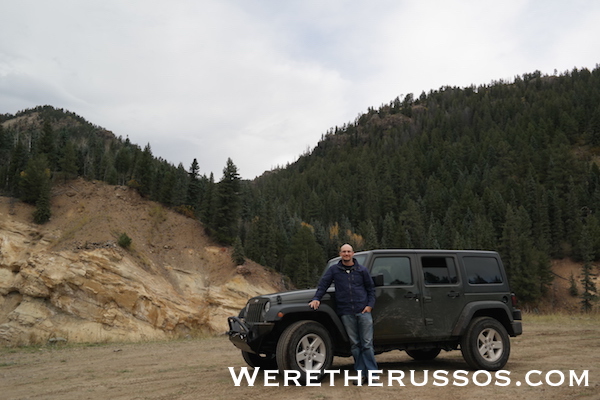
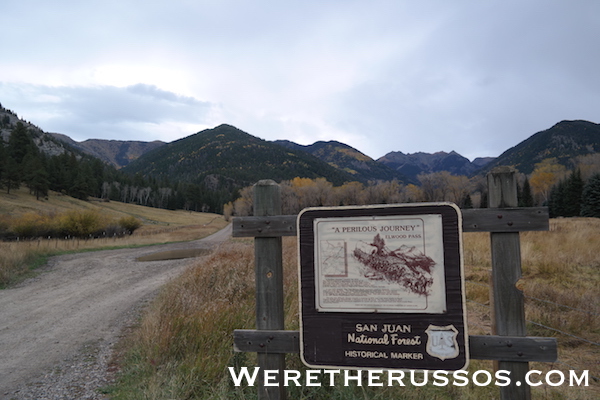
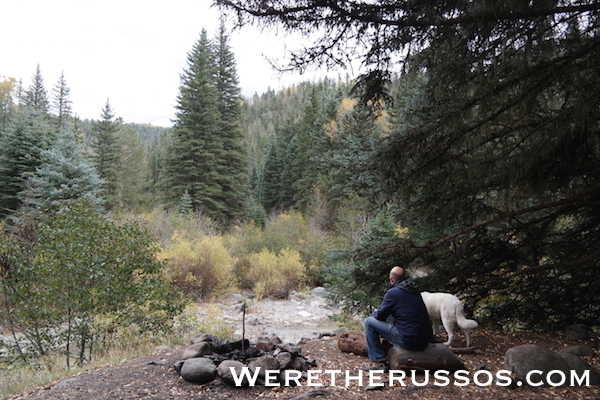
Could we live in Paogsa Springs, Colorado? The main reason we stayed the extra nights was to explore the area and see if we can live here one day. It’s not a town we could live in full time, but we could see ourselves living there June through September. Off roading, hiking, fishing and hot springs would keep us entertained during those months, but the limited access to great health care, internet and diverse grocery stores makes it hard to be able to settle down in the area.
We really enjoyed the town, seeing the sights and meeting the locals. Everyone we met moved to Pagosa Springs from somewhere else because they fell in love with the town. And let’s not forget about the hot springs, which the town is known for. We even soaked in a local spot right along the San Juan River. When the 100+ degree spring water gets too hot, hop into the river to cool off.
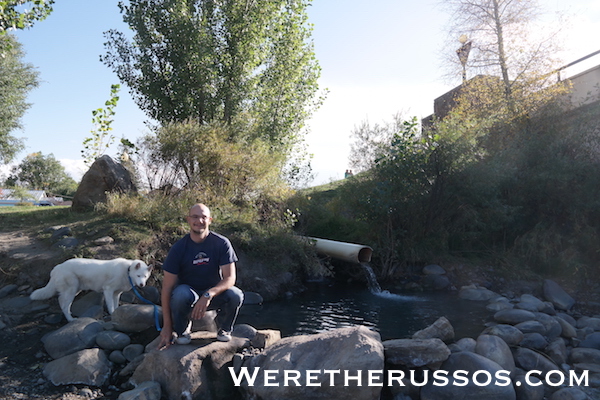
Thanks for reading! We hope to visit Pagosa Springs again the next time we’re in Colorado.
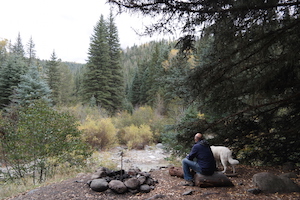
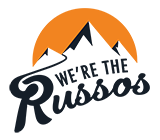
Hi – I really enjoy reading about your travels. My husband and I are purchasing a class B next week and plan to use it for weekends and vacations for the next couple of years before becoming full time RVers. We live in Colorado and have been doing a lot of research on dispersed camping and it looks like there are a lot of options. I’ve read a couple of times where you have commented that there is not much free camping in Colorado and wonder why you’ve found that to be the case. I am hoping we can spend most of our time in free sites.
From what we found in the areas of CO that we went to, there was a limited amount of accessible land to camp on. What I mean by that is, although there might be a lot of BLM/Forest Service land, very few had roads that we would want to drive an RV on.